Winter 2024 & 2023 Annual Report
MESSAGE FROM THE CHAIR

It is my honor and privilege to serve as the Forensic Science Standards Board (FSSB) Chair for 2023-2024. Along with my role as chair, I also serve as the Association of Firearm and Tool Mark Examiners (AFTE) representative on the FSSB. I am hopeful I can fill the large shoes of those who have served before me. My sincerest appreciation goes to the current and past members of the FSSB, as well as those serving in Scientific Area Committees (SACs) or subcommittee roles.
I want to thank each one of you, no matter what capacity you serve in OSAC, for all your hard work and dedication. It does not go unnoticed, nor should it be understated, that it is each of you and the committees and communities that you serve that make this organization work. I am fully aware of the amount of time you dedicate, voluntarily, to delivering the highest quality standards.
I also want to thank the OSAC Program Office (OPO), who provide full time support to anchor our work. They are open and available at every turn to reinforce our efforts and are great at their job. It is incredible the amount of work they put in for all of us to make it as seamless as possible to perform our tasks.
During this fiscal year, I would like to encourage everyone to think about standards implementation. One of the biggest ways we can show the impact OSAC has on the forensic community is by having organizations use the standards that all of you have been working on. We should all have an eye toward implementation and encourage it in the organization that we work in. If your organization is not already an implementer, begin working with them on a pathway to add your laboratory or agency to the growing list of OSAC Registry Implementers.
All of you should be so proud of the work you produce. As of this publication, the OSAC Registry contains 182 forensic science standards (126 published and 56 OSAC Proposed Standards). This is an incredible amount of work to have been accomplished thus far since OSAC’s humble beginnings exactly 10 years ago!
I am so excited to see the accomplishments continue in the 2024 fiscal year. I anticipate even more published and OSAC Proposed standards being added to the Registry, as well as even more organizations being added as OSAC Registry Implementers. I look forward to seeing the growth and impact of OSAC! Finally, thank you everyone for all the work you do, and I know those you serve are thankful as well.
OSAC NEWS
NIST Forensic Science Team is a Recipient of the 2023 Department of Commerce Group Gold Medal Award
Members of the National Institute of Standards and Technology’s (NIST) OSAC Program Office, along with several of our other NIST colleagues were honored to be the recipients of a 2023 Department of Commerce group Gold Medal Award.
The Gold Medal Award is the highest award given by the Department of Commerce for extraordinary, notable, or prestigious contributions that impact the mission of the Department of Commerce and/or one operating unit, and which reflect favorably on the Department.
The Forensic Science Team was recognized for “extraordinary leadership in establishing the infrastructure for the U.S. to increase stakeholder participation in forensic science standards development. They have created an inclusive, collaborative environment that has led to the development of U.S. consensus standards that promote the scientific underpinnings and improve the quality of forensic science practices. Their exceptional leadership harmonized significant differences in U.S. stakeholder viewpoints, promoted cooperation across groups, and rendered the complex standardization world accessible to the forensic community.”

The Forensic Science Team was acknowledged during NIST’s 51st Awards Ceremony held on January 24, 2024, and at the Department of Commerce’s 75th Annual Honor Awards Ceremony held on February 6, 2024.
We’d like to take a moment to extend our sincere appreciation to all our colleagues, OSAC members and affiliates, and our forensic science stakeholders for their support and dedication to standards. This award would not have been possible without all of you.
OSAC's Crime Scene Investigation & Recognition Subcommittee Seeking Industry Collaboration

OSAC’s Crime Scene Investigation and Reconstruction (CSI/R) Subcommittee is currently drafting standards for terrestrial laser scanners (TLS). They are seeking technical points-of-contact with TLS manufacturers who can be available to answer technical questions from the subcommittee about their device's capabilities to ensure that the standards being drafted can be successfully implemented. Please contact CSI/R Subcommittee Chair C. Stephen DeFrance at csdefrance [at] fbi.gov (csdefrance[at]fbi[dot]gov) if your company is interested in participating.
OSAC's Facial & Iris Identification Subcommittee Publishes New Technical Guidance Document

OSAC’s Facial & Iris Identification Subcommittee published a Technical Guidance document, Framework for Implementing Passive Live Facial Recognition, in January 2024.
This document provides:
- A framework for the implementation of a Passive live facial recognition system within the parameters of the described Concept of Operations.
- An overview of live facial recognition and guidance on the design guidelines for implementation. Central to the ethical implementation of a live facial recognition capability is the consideration of proportionality, human rights, and the right to privacy.
- A description of ‘privacy-by- design’ features that should be implemented in support of maintaining people’s anonymity.
- Information on the key performance metrics that describe the accuracy of a live (or Real Time) facial recognition system and guidance on how these should be measured.
- Recommendations for those considering implementing such a system.
See the Results from OSAC's Trace Materials Subcommittee's Paint Interlaboratory Comparison

OSAC’s Trace Materials Subcommittee conducted an interlaboratory data collection exercise to evaluate the draft of its "Standard Practice for the Interpretation and Report Writing in Forensic Comparisons of Trace Materials", with the first round of the study focusing on forensic paint analysis. Visit the Trace Materials Subcommittee webpage to see a video that reviews the exercise and provides information on the motivation for the study, the study design, participants’ results and feedback, and the additional interlaboratory studies that are being planned.
OSAC Releases a Refreshed Lexicon
The OSAC Lexicon was refreshed to bring better consistency and understanding in the way terms are used by the various forensic science disciplines.
The OSAC Lexicon now includes:
- OSAC Preferred Terms and definitions
- Terms from standards on the OSAC Registry
- Terms from SDO published standards (irrespective of Registry Status)
Read more about the refreshed OSAC Lexicon and take a moment to tour it on the OSAC Lexicon webpage.
Publication Available: Quality Assurance Framework for Scene Investigation

As part of NIST’s cooperative agreement with RTI International, RTI International has published a report, Demystifying Accreditation: A Framework for Accreditation of Forensic Units, that reviews the steps a crime scene investigation unit must take to achieve accreditation, discusses the documentation framework that comprises a quality management system, and provides guidance to meet the requirements in ISO/IEC 17020 and ISO/IEC 17025.
The goal of this cooperative agreement is to support the dissemination of OSAC proposed standards and facilitate the implementation of standards on the OSAC Registry to improve the quality of scene investigation.
OSAC REGISTRY & IMPLEMENTATION UPDATES
OSAC Registry Updates

As of this publication, the OSAC Registry contains 182 standards (126 SDO-published and 56 OSAC Proposed Standards) in over 20 forensic science disciplines and interdisciplinary topics.
Visit the OSAC Registry webpage to see and access these standards, as well as the applicable standards factsheets and checklists.
OSAC Registry Implementers
To date, 152 forensic science service providers (FSSPs) have submitted OSAC Registry Implementation Declaration Forms. This is a significant set of the 423 larger labs known to exist; however, this number pales in comparison to the thousands of providers when non-traditional service providers are taken into consideration.
This critical data allows NIST’s Special Programs Office to better evaluate the effectiveness of OSAC related activities and helps when determining where resources can be better allocated within the OSAC program. There are approximately 800 volunteers diligently contributing to the development and evaluation of standards in this organization. The implementation number is a direct reflection of the success of your efforts.
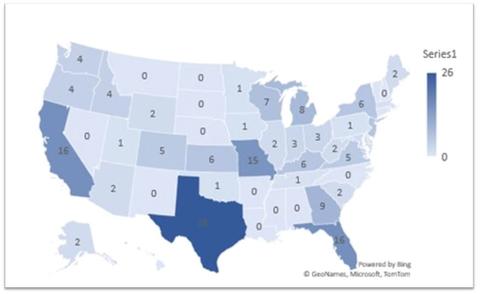
To further illustrate the extent of your success, your assistance is requested to help increase the pool of data and continue to grow this important cohort of declared implementers. If your agency is not currently listed amongst the known implementers, please work with your administration to encourage submission of a declaration!
Read more about some of the latest OSAC Registry Implementers:
- Austin Forensic Science Department
- Frisco Police Crime Scene Investigation Unit
- Macon County Sheriff’s Office
- New Jersey State Police Office of Forensic Sciences
- Titusville Police Department’s Forensic Investigation Division
- Wyoming State Crime Laboratory
Help Others on Their Implementation Journey!
Mentors Needed
The FSSB Implementer Cohort Task Group (TG) is looking for mentors to help others on their implementation journey. If your organization has implemented standards on the OSAC Registry and is interested in being a mentor to other organizations, let the Implementer Cohort TG know! Complete and submit the Mentor Exchange Program Form and a TG member will be in touch.
Subject Matter Experts Needed
The Implementer Cohort is also seeking subject matter experts (SMEs) for each forensic science discipline. Ideally, the candidate(s) must be established in their discipline, must have assisted with bringing their organization in compliance with OSAC Registry implementation, and should be capable of providing guidance to other FSSPs on their implementation journey. If you are interested in becoming a SME or know someone who would be perfect for this role, please contact crystal.degrange [at] nist.gov (crystal[dot]degrange[at]nist[dot]gov). The cohort is interested in candidates who are currently external to OSAC (Note: this can include non-members, past members, and/or current affiliates).
Forensic Science Standards in the Courts

In People v. Burrus, No. 817/2020, 2023 WL 6382664 (Sup. Ct. Kings Cty. 2023), a Brooklyn trial court considered the admissibility of low-copy number DNA testing and analysis by FST, a probabilistic genotyping software, under New York’s Frye test of general acceptance. The court heard testimony about standards listed on the OSAC Registry, standards from Institute of Electrical and Electronics Engineers, and SWGDAM. The court ultimately admitted the evidence in part because in its view, the existence of standards from SWGDAM and the state’s compliance with those standards demonstrated that the technique was generally accepted as reliable by the scientific community.
OSAC: A YEAR IN REVIEW
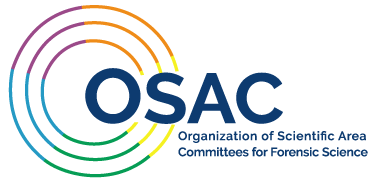
In addition to delivering quarterly updates, this edition of the OSAC Newsletter also serves as OSAC’s annual report and provides a review of OSAC’s accomplishments and activities over the past fiscal year (FY23) which covers the period of October 1, 2022, through September 30, 2023.
Organizational Snapshot
OSAC was established in 2014 and entered its ninth year of existence in February 2023. OSAC’s 800+ volunteer members and affiliates continue to work together to draft and evaluate forensic science standards via a transparent, consensus-based process that allows for participation by all stakeholders.
FY23 Membership Snapshot

OSAC Forensic Science Standards Board
The Forensic Science Standards Board (FSSB) serves as OSAC’s governing board and aims to:
- Facilitate the promulgation of standards that will support the development of quality benchmarks and enhance consistency across the forensic science community.
- Discuss and address the issues related to the OSAC standards development process.
- Coordinate the activities of OSAC’s Scientific Area Committees (SACs) and subcommittees.
This fall, the FSSB approved the following FSSB Executive Task Group and new FSSB members. These individuals began their roles on October 1, 2023.
FSSB Executive Task Group Members (October 1, 2023 - September 30, 2024):
- Andy Smith, FSSB Chair, Association of Firearms and Tool Mark Examiners (AFTE) representative
- Sara Walker, FSSB Vice Chair, Association of Quality Assurance Managers (AFQAM) representative
- Jeffrey Nye, FSSB Executive Secretary, American Society of Crime Laboratory Directors (ASCLD) representative
New FSSB Members:
- Michael Kessler, Scene Examination SAC Chair
- Henry Swofford, Physics/Pattern Interpretation SAC Chair
- Jeff Gurvis, International Association for Identification (IAI) representative
Visit the FSSB webpage to see all of OSAC's FSSB members.
FSSB Meetings
The FSSB held nine virtual meetings and three in-person meetings in FY23 to provide strategic direction and help advance the work of OSAC.
Beginning in March 2023, to help increase transparency, the FSSB shared their meeting agendas on the OSAC website and provided a public feedback session during quarterly meetings. This public feedback session is intended to provide an opportunity for forensic science stakeholders to share feedback and ask questions related to agenda items or matters within the FSSB’s authority.
Standards Activities
In the past year, OSAC continued to move hundreds of standards through the drafting and Registry approval processes. Here is a snapshot of OSAC’s standards activities at the end of FY23:
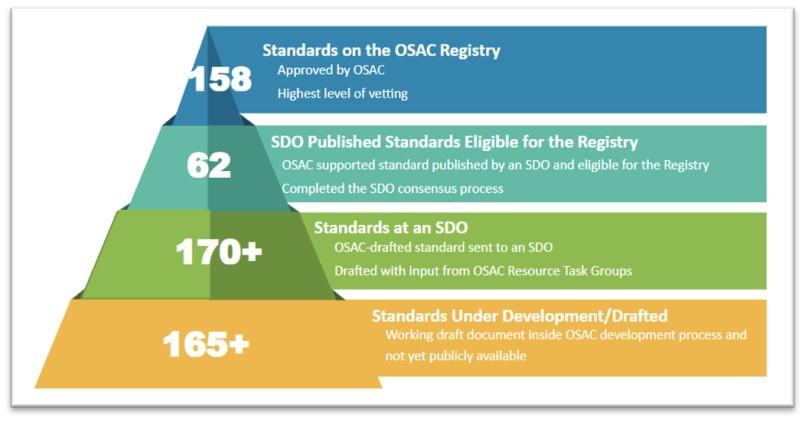
Improved Access to ASTM Standards
OSAC works with many standards developing organizations (SDOs), one of which is ASTM International. In October 2022, OSAC and ASTM executed an agreement for free public access to the E30 (Forensic Science) collection of standards through the OSAC Registry webpage. ASTM Committee E30 on Forensic Sciences develops standards relevant to forensic science, including criminalistics, digital and multimedia evidence, fire debris analysis, drug testing analysis, collection, and preservation of physical and digital evidence as well as reporting of findings.
Between September 2022 and September 2023 there were 2,929 downloads of E30 standards. The top downloaded standards included (Note: The number in parenthesis indicates the total number of downloads):
- E3235 Standard Practice for Latent Print Evidence Imaging Resolution (254)
- E1732 Standard Terminology Relating to Forensic Science (139)
- E2329 Standard Practice for Identification of Seized Drugs (129)
- E2917 Standard Practice for Forensic Science Practitioner Training, Continuing Education, and Professional Development Programs (125)
- E1618 Standard Test Method for Ignitable Liquid Residues in Extracts from Fire Debris Samples by Gas Chromatography-Mass Spectrometry (114)
OSAC Registry

The OSAC Registry is a repository of selected published and proposed standards for forensic science. These documents contain minimum requirements, best practices, standard protocols, terminology, or other information to promote valid, reliable, and reproducible forensic results.
OSAC added 50 standards to the Registry in FY23 which included:
- 16 new SDO-published standards
- 30 OSAC Proposed Standards
- 4 Registry re-approvals
FY23 ended with a total of 158 standards on the OSAC Registry (109 published and 49 OSAC Proposed), representing over 20 specific forensic science disciplines and various interdisciplinary topics.

The table below provides a breakdown of the number of published and proposed standards on the OSAC Registry by discipline for the past two fiscal years, along with the change in the number of standards.

OSAC Registry Implementation: Efforts & Impacts
From the crime scene to the courtroom, having valid and reliable forensic science is essential. Standards help to enhance the validity and reliability of results – but they are only beneficial if they are used. OSAC continued to focus its implementation efforts on traditional forensic science service providers (FSSPs), and in the fall of 2022, we expanded our implementation outreach to non-traditional FSSPs as well.
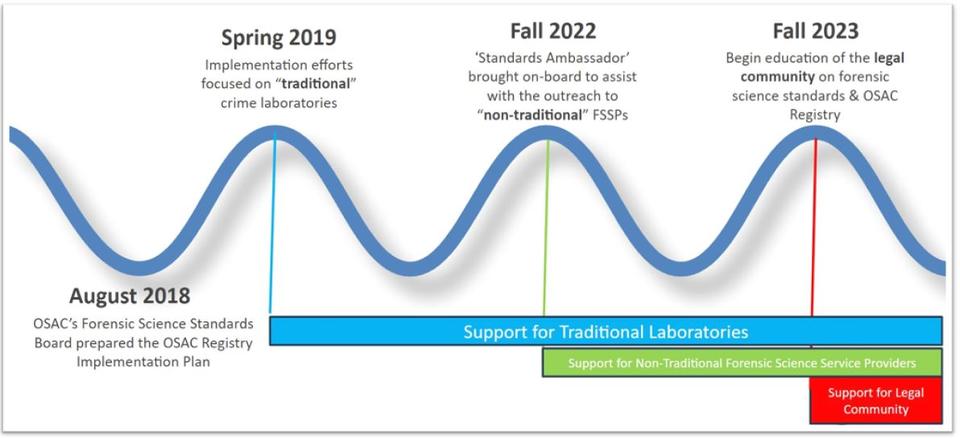
OSAC is currently engaged in an effort to better understand if and how courts and other legal stakeholders are using forensic science standards on the OSAC Registry in legal proceedings. OSAC is working with a consultant to help us capture information about how these standards are being used in the legal community so we can learn from their use and ultimately improve the production of forensic science standards over time.
Standards implementation is voluntary, and OSAC encourages both traditional and non-traditional FSSPs to self-adopt standards and best practices on the OSAC Registry to strengthen forensic science practice. To help assess the impact of implementation, FSSPs are encouraged to complete and submit an OSAC Registry Implementation Declaration Form.
At the end of FY23, OSAC had received a total of 147 Registry Implementation Declaration Forms from FSSPs across the county and internationally, 51 of which were submitted during FY23.
FSSB Implementer Cohort Task Group
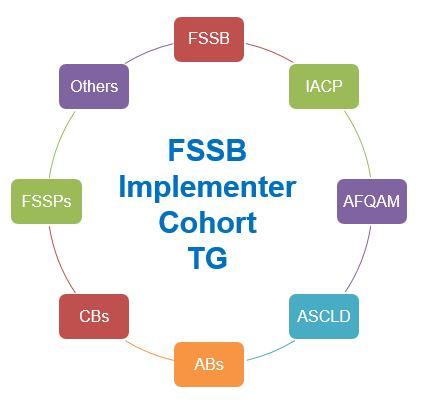
In October 2022, OSAC’s FSSB established a new Implementer Cohort Task Group (TG) to further help support standards implementation. The purpose of this TG is to provide guidance and advice to other potential implementers on how to implement the standards on the OSAC Registry.
The TG consists of:
- members of OSAC’s FSSB
- partner organizations (e.g., AFQAM, ASCLD, IACP)
- authoritative bodies (e.g., accrediting bodies (ABs) and certification bodies (CBs))
- users of standards (e.g., FSSPs, quality managers)
The Implementer Cohort TG will also consist of user groups. These user groups will be broadly discipline-based and led by subject matter experts in each discipline. The user groups will be populated with implementers who will help to serve as mentors and assist other FSSPs with implementation efforts.
OSAC Registry Open Enrollment
During the summer of 2023, OSAC transitioned to an “open enrollment” format to annually assess the state of implementation of standards on the OSAC Registry. The 2023 open enrollment period was July 18 – September 1, 2023, and during this time FSSPs were encouraged to update or initiate their implementation activities on the OSAC Registry – Standards Implementation Declaration Form.
While we will continue to accept declaration forms throughout the year, this open enrollment period will occur around the same time each year and is intended to be an opportunity for FSSPs to standardize their annual voluntary declaration submissions or updates.
Responses to 2023 Open Enrollment Period:

Research & Development Needs

OSAC documents and publicly shares with the forensic science community any research and development (R&D) needs that are identified during the standards development process. Academic institutions, federal agencies, and other research organizations can access the R&D needs on the OSAC website to help address technical challenges identified by forensic science service providers.
This year OSAC took a deeper look at the impact these R&D needs have had on the forensic science community:
- 175 R&D needs were identified by OSAC’s 22 subcommittees.
- Since 2016, there have been over 450 publications and presentations identified that address these needs.
- Approximately $32M in funding through 74 individual grants supporting research to address these needs.
Internal Engagements
OSAC All-Hands Meetings
OSAC hosted two in-person meetings in the spring of 2023 for members and affiliates to come together to continue their work on drafting and reviewing standards.
The first meeting held April 17 – 21 in Houston, TX, had 200+ OSAC members and affiliates from the Physics/Pattern Interpretation SAC and its five subcommittees, Scene Examination SAC and its three subcommittees, Chemistry: Trace Evidence SAC and its two subcommittees, Resource Task Groups, and FSSB members.
The second meeting held May 15 – 19 in Indianapolis, IN, consisted of 200+ members and affiliates from the Biology SAC and its two subcommittees, Digital/Multimedia SAC and its four subcommittees, Medicine SAC and its four subcommittees and the Chemistry: Seized Drugs & Toxicology SAC and its two subcommittees.
Both meetings were extremely productive and OSAC volunteers commented on how important and valuable it is to be able to work in-person to advance standards through the drafting and Registry approval processes.

OSAC Leadership Strategy Session
On August 30, over 60 people, including FSSB members and SAC, subcommittee (SC), and Resource Task Group (RTG) leadership, participated in the 2023 OSAC Leadership Strategy Session (OLSS).
This virtual meeting provided an opportunity for OSAC leadership to look back and share their activities, accomplishments, and challenges from FY23. Additionally, the OLSS provided an opportunity for subcommittees to begin to identify their goals for FY24.
External Engagements
Stakeholder Outreach Meeting with OSAC Registry Implementers
To further broaden and strengthen collaboration with our stakeholders, OSAC has participated in a series of virtual meetings with key stakeholder groups in the forensic science community to share ideas and find comment goals to work towards.
OSAC held its fourth Stakeholder Outreach Meeting on June 15, 2023, with 45+ organizations that have implemented standards on the OSAC Registry. The goal of the two-hour virtual meeting was to provide an opportunity for a dialog between implementers and OSAC leadership to exchange ideas on how to better support standards implementation efforts in the forensic science community. Through a series of facilitated discussions, meeting participants provided ideas, shared challenges, and identified opportunities for improvement related to the implementation of forensic science standards.
The feedback provided during this meeting was extremely valuable and will be used to help strengthen future collaboration opportunities with OSAC stakeholders as well as inform OSAC’s future plans and priorities.
Forensic Science Conferences and Other Events
Professional conferences and other forensic science meetings provide opportunities for OSAC to engage directly with forensic science practitioners and other stakeholders in the community. OSAC had a strong presence at various national and regional conferences, as well as small group discussions, to encourage participation in supporting standards development and implementation efforts.
Here are some samples of the conferences hosted by professional forensic science organizations where OSAC presented and exhibited:
- 2022 AFQAM Training Conference. OSAC participated in the 21st annual Association for Forensic Quality Assurance Managers (AFQAM) Training Conference held October 11 – 14 in Lake Tahoe, CA. OSAC Program Office, in collaboration with our colleagues from AAFS, gave the presentation, NIST-AAFS Cooperative Agreement: Implementation of Standards on the OSAC Registry. OSAC was also an exhibitor at the conference.
- 2023 AAFS Conference. OSAC had a large presence at the American Academy of Forensic Sciences (AAFS) 75th Anniversary Conference. More than 3,200 people attended this conference which was held February 13 – 18 in Orlando, FL. More than 25 OSAC and standards-related presentations were given, and NIST and OSAC also participated as an exhibitor.
- 2023 ASCLD Symposium. More than 600 people attended the 2023 ASCLD Symposium held April 30 – May 4 in Austin, TX. Various standards-related presentations were given and OSAC Program Office staff “cooked up” a presentation, Eating the Standards Implementation Elephant.
- 2023 IAI Education Conference. Many OSAC and standards-related presentations were given at the 107th IAI Education Conference held August 20 – 26 in National Harbor, MD. More than 1,200 people attended this event – the most attendees to date! NIST, with its OSAC Team, also had a booth in the exhibit hall where attendees could learn more about NIST’s research activities and OSAC’s standards development and implementation efforts and pick up free resources.
Digital Outreach

OSAC continued to grow our digital communications presence, as evidenced by an increase in website views, downloads, and LinkedIn posts and followers. As our outreach grows, so does our ability to reach more stakeholders and educate the forensic science community about new standards being developed and championed by OSAC.
Speaking of LinkedIn, if you don’t already follow OSAC, be sure to hit that follow button to see what’s going on and help expand our list of followers.
OSAC Homepage: FY23 Metrics (Oct 1, 2022 - Sept 30, 2023):
- 11,973 users
- 24,494 views
Top 10 Pageviews:
Webpage | Views |
| OSAC Registry | 26,714 |
| OSAC Homepage | 24,494 |
| Organizational Structure | 10,787 |
| Friction Ridge Subcommittee | 8,608 |
| Standards Open for Comment | 6,687 |
| Scientific Area Committees | 5,947 |
| R&D Needs | 5,741 |
| Governing Documents | 4,393 |
| Access to Standards | 4,383 |
| Standards Resources | 3,958 |
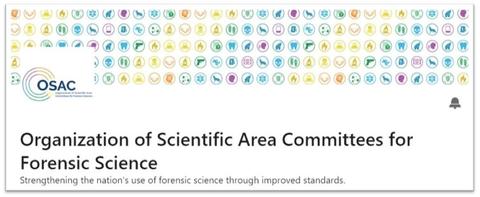
OSAC LinkedIn: FY23 Metrics
- 48 posts
- Added 600+ new followers
- Number of followers at end of FY22 = 2,072
- Number of followers at end of FY23 = 2,754
OSAC Awards
The following individuals and group were recognized for their outstanding and extraordinary efforts in furthering OSAC’s mission. The award recipients were announced and presented with a certificate at the spring 2023 OSAC Meetings or at the OSAC Leadership Strategy Session (OLSS) held this past September.
Distinguished Individual Service Award. This award is given to an individual member who has gone above and beyond in their service to OSAC. One award is given per SAC and to one member from the FSSB Task Groups. The 2023 Distinguished Individual Service Award recipients were:
- Susan Greenspoon, Biology SAC
- Rebecca Wagner, Chemistry: Seized Drugs & Toxicology SAC
- Catherine Brown, Chemistry: Trace Evidence SAC
- Neal Gieselman, Digital/Multimedia SAC
- Wendy McQuade, Medicine SAC
- Toby Wolson, Physics/Pattern Interpretation SAC
- Paola Tiedemann, Scene Examination SAC
- Julia Leighton, FSSB Legal Task Group
Outstanding Group Award
OSAC’s Hair and Fiber Task Groups of the Trace Materials Subcommittee were the recipients of the FY23 Outstanding Group Award and recognized for their outstanding work efforts in furthering OSAC’s mission.

Sharon B. Nakich Award
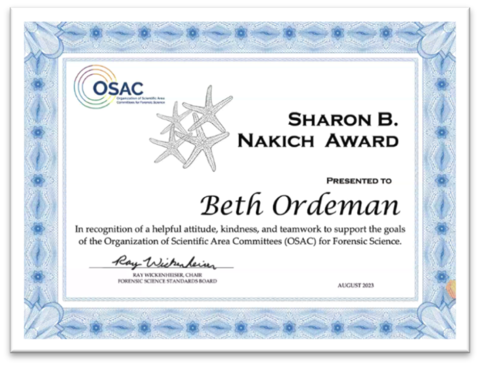
In honor of our colleague, Sharon Nakich, this OSAC peer-to-peer award acknowledges a helpful attitude, kindness, teamwork, or behind-the-scenes contributions to support the goals of OSAC. It recognizes an individual who has made significant contributions to promote OSAC’s mission through their support of OSAC. This nominee works diligently and tirelessly as a champion for OSAC, at times without recognition.
Beth Ordeman was the recipient of the 2023 Sharon B. Nakich Award. Beth was the chair of the Human Forensic Biology Subcommittee. As chair, she championed the combining of OSAC’s two very active DNA subcommittees into the current Human Biology Subcommittee which is one of the largest subcommittees in OSAC. She also operated for almost a year without a vice chair and for some time without an executive secretary. Beth kept the group moving and continued to further progress on documents regardless of where they were in the various processes and was always willing to share opportunities for improvement to the subcommittee, the SAC and the FSSB as appropriate. In addition, Beth has been involved in implementing the published standards in her laboratory as well as assisting with trainings and presentations conducted at various meetings.
Beth is knowledgeable, loyal, an unsung hero, a hard worker and has been an asset to the Human Biology Subcommittee and the Biology SAC for many years. She is a role model for other members on how to participate in OSAC and make a difference in the community.
Final Words
OSAC continues to make great strides to help facilitate the development and implementation of technically sound and consensus-based forensic science standards. With 800+ combined members and affiliates representing forensic science practitioners, laboratory managers, academic researchers, measurement scientists, and experts in statistics, human factors, legal, and quality infrastructure, we will continue to work together to strengthen forensic science through standards.
The FSSB and NIST’s OSAC Program Office would like to thank all OSAC volunteers for their time and effort and all the federal, state, and local government agencies, academic institutions, and criminal justice and forensic science organizations that support the OSAC mission by supporting their staff to participate.
OSAC & OTHER FORENSIC SCIENCE EVENTS
Upcoming Events:
- March 20 – 21: FSSB spring quarterly meeting
- April 2 – 4: OSAC Meetings for the Chemistry: Toxicology & Seized Drugs, Digital/Multimedia, Scene Examination SACs and subcommittees, Forensic Odontology Subcommittee, and the FSSB’s Human Factors and Legal Task Groups.
- April 29 – May 2: 2024 ASCLD Symposium
- May 14 – 16: OSAC Meetings for the Biology, Chemistry: Trace Evidence, Medicine, and Physics/Pattern Interpretation SACs and subcommittees.
Past Events:
- WEBINAR: We Did It! You Can Too! An Inside Perspective to Implementing Standards on the OSAC Registry. On January 30, 2024, OSAC, the American Society of Crime Laboratory Directors (ASLCD), and the Forensic Technology Center of Excellence (FTCoE) hosted a webinar where presenters and panelists shared their perspectives on topics such as planning, staff education, how to conduct a gap analysis and more.
- PODCAST: Standards and Forensics: Fact vs. Fiction – Standards Impact. In this ASTM “Standards Impact” podcast, hear from OSAC and ASTM E30 officers, Agnes Winokur and Laura Hernandez as they talk about the impact of forensic science standards.
- PODCAST: A Conversation with Mark Stolorow on Standards, Progress, and Technology. This Crime Lab Coach Cast Podcast features Mark Stolorow, former OSAC Director, and current Standards Implementation Ambassador. Listen as Mark shares his career path in forensic science and his thoughts about the ongoing effort to harmonize progress in forensic science.
NIST'S FORENSIC SCIENCE PROGRAM NEWS & UPDATES
NIST Spotlight: Forensics Videos and App for Collecting Trace Evidence
Check out this NIST Spotlight on the updated mobile app and videos for collecting trace evidence.
Researchers Analyze THC in Breath of Cannabis Smokers
Researchers at the National Institute of Standards and Technology (NIST) and the University of Colorado Boulder have conducted a study in which they collected breath samples from people both before and after they smoked high-THC cannabis and used laboratory instruments (not a handheld device) to measure the amount of THC in their breath. The goal of this study, published in the Journal of Breath Research, was to begin developing a protocol that yields reproducible results — a necessary step toward a reliable, validated field-based method.

